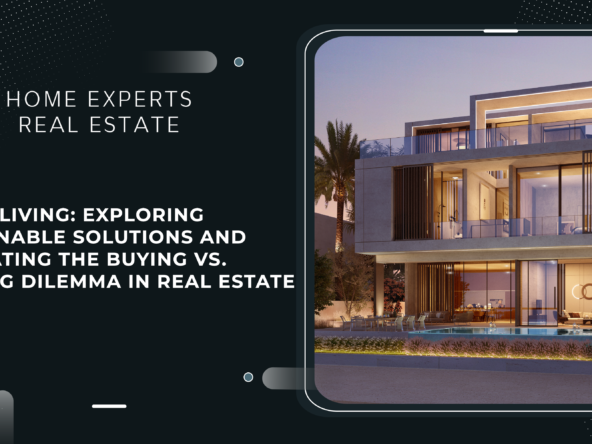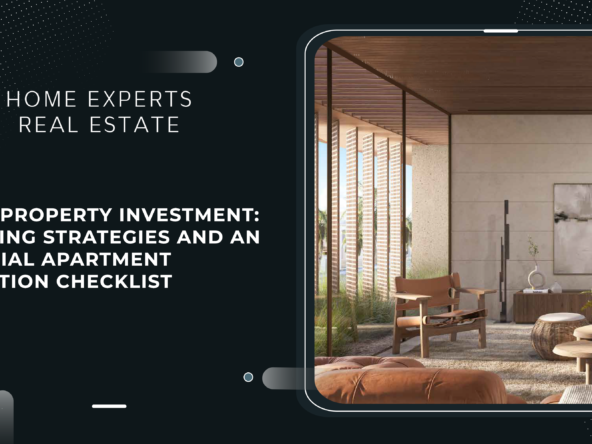Home design is not merely about aesthetics; it’s a reflection of lifestyle, comfort, and personal taste. A well-designed home provides a sanctuary, influencing our mood, productivity, and overall well-being. Staying updated with the latest interior design trends ensures that your living spaces remain modern and stylish. Whether exploring innovative home renovation ideas, keeping up with evolving interior design trends, or maximizing the potential of outdoor living spaces, staying informed allows you to create spaces that align with contemporary preferences and functional needs. ‘Home Renovation Ideas’ inspire transformative changes, ‘Interior Design Trends’ guide aesthetic choices, and ‘Outdoor Living Spaces’ bring nature seamlessly into your lifestyle. By embracing these trends, you not only elevate your home’s appeal but also ensure that it evolves with the times, becoming a dynamic and inspiring haven for years to come.
Current Interior Design Trends

In the realm of interior design, popular color schemes, textures, and materials play pivotal roles in shaping the ambiance of a space. Current trends lean towards versatile neutrals, such as soft grays, warm taupes, and calming greens, creating timeless backdrops. Textures like natural fabrics, reclaimed wood, and matte finishes add depth and warmth, fostering a cozy atmosphere. Materials like sustainable wood, recycled metals, and eco-friendly fabrics align with the growing emphasis on environmentally conscious design. The interplay of these elements brings a harmonious balance, creating inviting and aesthetically pleasing interiors that cater to both modern sensibilities and enduring elegance.
Sustainability has become a guiding force in contemporary interior design, reshaping the industry’s ethos. The influence of sustainability extends beyond eco-friendly materials; it embraces a holistic approach, emphasizing energy efficiency, waste reduction, and ethical sourcing. Designers increasingly opt for recycled and upcycled materials, embracing minimalism to reduce environmental impact. Energy-efficient lighting and appliances, along with sustainable furniture choices, contribute to a greener living space. This shift reflects a collective commitment to creating interiors that not only exude style but also prioritize responsible consumption, fostering a symbiotic relationship between design innovation and environmental stewardship.
Technology has revolutionized modern home interiors, seamlessly blending aesthetics with functionality. Smart home systems, equipped with voice-activated assistants and automated controls, enhance convenience and efficiency. Innovative lighting solutions, such as LED smart bulbs, create dynamic atmospheres that adapt to different moods. Integration of smart appliances and home security systems not only augments safety but also aligns with contemporary lifestyles. Designers leverage augmented reality (AR) and virtual reality (VR) for virtual furniture placement and space visualization, streamlining the design process. The role of technology in modern interiors transcends gadgets; it’s about creating homes that intelligently respond to the needs and preferences of their inhabitants.
Innovative Outdoor Oasis Ideas
Transforming outdoor living spaces into inviting retreats involves a thoughtful blend of nature, design, and functionality. Begin by introducing lush greenery and vibrant flowers to create a natural oasis. Strategic placement of comfortable, weather-resistant furniture enhances relaxation and socialization. Harness the power of lighting, incorporating string lights, lanterns, and pathway illumination to establish a warm ambiance. Embracing the rising trend of outdoor kitchens and entertainment areas further elevates the experience. Install a functional outdoor kitchen with a grill, countertops, and seating, fostering a seamless transition from indoor to outdoor dining. With these creative elements, outdoor living spaces become not just extensions of the home but immersive retreats for relaxation and social gatherings.

Home Renovation Inspirations
Embarking on a home renovation is a transformative journey, breathing new life into living spaces and enhancing functionality. The process involves careful planning, from conceptualization to execution, considering both aesthetic aspirations and practical needs. Renovations serve a crucial role in adapting homes to changing lifestyles, technological advancements, and design trends.
Successful home renovation projects often showcase remarkable before-and-after transformations. These stories illustrate the power of thoughtful design, innovative use of space, and the impact of updated materials and finishes. Whether it’s a kitchen metamorphosis from cramped to open-concept or a dated bathroom turned into a spa-like retreat, these transformations inspire homeowners to reimagine their own spaces.
For those mindful of budget constraints, there are plenty of budget-friendly home renovation ideas that can refresh various spaces. In the kitchen, simple changes like repainting cabinets, updating hardware, or adding a stylish backsplash can yield a significant visual impact without breaking the bank. In living areas, consider rearranging furniture, adding accent pieces, or applying a fresh coat of paint to breathe new life into the space.
Bathrooms can be revamped with cost-effective solutions like updating fixtures, replacing worn-out grout, or installing new mirrors. Energy-efficient lighting upgrades not only modernize spaces but also contribute to long-term savings.
In bedrooms, explore DIY projects like creating a statement wall with inexpensive materials or repurposing furniture for a personalized touch. Landscaping improvements, such as planting low-maintenance perennials or adding outdoor seating, can enhance the curb appeal without substantial costs.
In essence, home renovation ideas need not be extravagant; thoughtful, budget-friendly choices can make a significant impact, ensuring that the process remains accessible and rewarding for homeowners.
Balancing Aesthetics and Functionality
In the arena of interior design trends, the pursuit of spaces that seamlessly blend beauty and functionality has become paramount. Creating environments that are aesthetically pleasing while also serving practical needs contributes to a harmonious living experience. One notable trend championing this balance is minimalist design. Minimalism advocates for simplicity, clean lines, and a curated selection of elements, fostering an environment where form follows function. By eliminating unnecessary clutter and prioritizing essential elements, minimalist design ensures that each component serves a purpose, promoting both visual appeal and practicality. This approach to interior design not only enhances the overall aesthetics of a space but also cultivates an atmosphere of tranquility and efficiency. Embracing minimalist principles within interior design trends represents a commitment to a refined and purposeful living space, where every element contributes meaningfully to the overall design narrative.
Tips & Tricks
- Living Room:
- Choose multifunctional furniture, like a sofa bed or ottomans with storage.
- Utilize vertical space with wall-mounted shelves or floating cabinets.
- Opt for light-colored furniture to create an illusion of openness.
- Kitchen:
- Install pull-out pantry shelves to maximize storage space.
- Use open shelving to display items and create an airy feel.
- Invest in space-saving appliances and consider a well-organized layout.
- Bedroom:
- Opt for a platform bed with built-in storage drawers.
- Use wall-mounted lighting to free up bedside table space.
- Consider a mirrored closet to give the illusion of a larger space.
- Bathroom:
- Install floating shelves for toiletries and towels.
- Use a corner shower to optimize floor space.
- Consider a wall-mounted toilet to create a more open feel.
- Home Office:
- Choose a fold-down desk for compact workspaces.
- Utilize vertical wall space with cork boards or pegboards.
- Invest in modular furniture that can adapt to different tasks.
- Dining Room:
- Consider a foldable dining table for flexibility.
- Use benches or stools that can be tucked under the table.
- Install a mirror to visually expand the space.
- Hallways:
- Use wall-mounted hooks or racks for storage.
- Consider built-in cabinets for shoes and accessories.
- Use mirrors to create the illusion of a longer hallway.
- Children’s Room:
- Opt for bunk beds or loft beds to save floor space.
- Use wall-mounted shelves for books and toys.
- Invest in dual-purpose furniture, like a desk that converts to a drawing easel.
Customization and Personalization
Personalized Home Decor and Custom Furniture Trend:
The trend towards personalized home decor and custom furniture allows individuals to express their unique style and preferences.
Incorporating Personal Touches:
- Select a cohesive color palette that resonates with personal preferences.
- Integrate personalized items like family photos or handmade artworks.
- Balance statement pieces with neutral backgrounds for a harmonious look.
Impact on Well-being:
- Enhances emotional connection to living spaces.
- Fosters a sense of ownership and comfort.
- Promotes positive mental well-being through a personalized and nurturing environment.
Embracing Sustainable Design
| ASPECT | DISCUSSION |
| Importance in Home Design | The increasing importance of sustainability in home design aligns with the broader shift towards eco-conscious living. Sustainable design considers the environmental impact of materials, energy efficiency, and overall ecological footprint. |
| Eco-friendly Home Renovation Ideas and Materials | – Opt for recycled or reclaimed materials in flooring and furniture. -Install energy-efficient appliances and lighting.
– Choose low VOC paints and finishes to improve indoor air quality. – Incorporate sustainable wood and bamboo for furniture and cabinetry. – Invest in solar panels for energy generation in outdoor living spaces. |
| Long-term Benefits of Sustainable Design | – Reduced energy consumption leads to lower utility bills.
– Use of durable, sustainable materials results in longer-lasting, quality finishes. – Contributes to a healthier indoor environment by minimizing exposure to harmful chemicals. – Supports environmental conservation efforts by reducing waste and promoting responsible sourcing. |
| Relation to Trends and Spaces | Sustainable choices are integral to modern interior design trends, influencing not only the aesthetics but also the functionality of spaces, including outdoor living spaces and home renovation projects. |
Incorporating Art and Culture
The integration of art and cultural elements into home design provides a captivating avenue for expressing individuality and creating spaces with rich, diverse narratives. When considering home renovation ideas, infusing cultural influences can elevate a space beyond mere aesthetics, imbuing it with personal and collective meaning.
For instance, incorporating traditional artifacts, textiles, or indigenous artworks as focal points can transform a room, telling stories of heritage and identity. Think about integrating vibrant patterns inspired by global cultures in upholstery, wall art, or decorative elements. These additions not only contribute to the visual appeal but also create a unique atmosphere that resonates with the inhabitants.
In home renovations, cultural elements can extend beyond mere decorations. For instance, revamping a kitchen to incorporate a traditional cooking space or integrating architectural elements inspired by cultural aesthetics can be transformative. By seamlessly blending modern functionality with cultural influences, homeowners can create spaces that are both functional and deeply resonant.
The role of art in expressing individuality within a home goes beyond cultural influences. Personalized art pieces, whether created by the inhabitants or acquired from local artists, contribute to a sense of uniqueness and ownership. A home adorned with a diverse array of art forms, reflecting various cultures and individual tastes, becomes a living canvas that celebrates diversity, fosters self-expression, and enhances the overall aesthetic allure of the space.
DIY Home Improvement Projects
1. Floating Bookshelves
- Materials Needed:
- L-shaped metal brackets
- Screws
- Wall anchors
- Level
- Screwdriver/drill
- Books
- Steps:
- Locate Wall Studs: Use a stud finder to locate wall studs where you want to install the bookshelves.
- Attach Brackets: Secure the L-shaped brackets to the wall studs using screws and a drill.
- Position the Books: Stack books horizontally on the bracket, leaving the bottom book cover hanging to create a floating effect.
- Repeat: Repeat the process for additional shelves, ensuring they are level.
2. Mason Jar Organizer
- Materials Needed:
- Wooden board
- Mason jars with lids
- Hose clamps
- Screws
- Screwdriver/drill
- Paint/stain (optional)
- Steps:
- Prepare the Board: Sand the wooden board and paint or stain it if desired.
- Position the Jars: Secure hose clamps to the board, positioning them where you want the jars.
- Attach Mason Jars: Tighten the hose clamps around the necks of the Mason jars using screws.
- Mount on Wall: Secure the board with attached jars to the wall using screws.
3. Crate Storage Coffee Table
- Materials Needed:
- Wooden crates
- Plywood
- Screws
- Wood glue
- Sandpaper
- Stain/paint
- Casters (optional)
- Steps:
- Assemble Crates: Arrange wooden crates in a desired configuration for the table.
- Attach Crates: Secure the crates together using screws and wood glue.
- Add Plywood Top: Attach a plywood sheet to the top of the crates using screws.
- Sand and Finish: Sand the entire table and apply stain or paint for a finished look.
- Add Casters (Optional): If desired, attach casters to the bottom for mobility.
These simple DIY projects are a great way to add a personal touch to your home while being budget-friendly and relatively easy to complete. Adjust the difficulty level based on your skill and comfort with tools.
Satisfaction of DIY Home Improvements:
- Personal Accomplishment: Completing a DIY home improvement project provides a sense of personal accomplishment and pride, especially when seeing the tangible results of your efforts.
- Customization and Personalization: DIY allows homeowners to tailor projects to their specific tastes and needs, adding a unique and personalized touch to their living spaces.
- Skill Development: Engaging in DIY projects fosters the development of new skills, from basic carpentry to problem-solving, empowering individuals to take on more ambitious projects over time.
- Connection to Space: The hands-on nature of DIY fosters a deeper connection to one’s living space. Homeowners often develop a greater appreciation for the effort invested in their homes.
Cost-Effectiveness of DIY Home Improvements:
- Material Cost Savings: DIY projects can be more budget-friendly as they eliminate labor costs. Homeowners can shop for materials, take advantage of sales, and repurpose items, reducing overall expenses.
- Avoiding Contractor Fees: Performing tasks independently saves money that would otherwise be spent on professional contractors. Simple tasks like painting, minor repairs, or basic carpentry can be done without hiring external help.
- Flexible Budgeting: DIYers have control over the budget, choosing where to allocate funds and making adjustments as needed. This flexibility allows for a more cost-effective approach to home improvement.
- Reuse and Repurpose: DIY often involves repurposing existing items or materials, reducing waste and contributing to a more sustainable approach to home improvement.
While the cost-effectiveness of DIY depends on the complexity of the project and individual skill levels, the satisfaction derived from creating and enhancing one’s living space is a universal benefit. Homeowners find value not only in the monetary savings but also in the sense of ownership and connection to their homes.
Safety Considerations for DIY Enthusiasts:
- Protective Gear:
-
-
- Wear safety glasses to protect your eyes from debris.
- Use gloves to safeguard your hands during handling and cutting.
- Wear a dust mask when working with materials that produce dust or fumes.
-
- Proper Ventilation:
-
-
- Ensure good airflow in your workspace, especially when using paints, stains, or adhesives that may emit fumes.
-
- Tool Safety:
-
-
- Familiarize yourself with the proper usage and safety guidelines for each tool.
- Keep tools in good condition, checking for any defects before use.
- Follow proper techniques to avoid accidents and injuries.
-
- First Aid Kit:
-
-
- Keep a well-stocked first aid kit easily accessible in case of minor injuries.
- Know basic first aid procedures to address cuts, scrapes, or minor burns.
-
- Fire Safety:
-
- Be cautious with flammable materials, and keep them away from open flames or heat sources.
- Have a fire extinguisher on hand, understanding its use and maintenance.
Essential Tools for DIY Enthusiasts:
- Safety Glasses:
-
-
- Protect your eyes from debris and potential hazards.
-
- Ear Protection:
-
-
- Use earplugs or earmuffs when working with loud tools to prevent hearing damage.
-
- Dust Mask:
-
-
- Shield yourself from inhaling dust or harmful particles.
-
- Gloves:
-
-
- Wear appropriate gloves to protect your hands from cuts, splinters, or chemicals.
-
- Respirator:
-
-
- Use a respirator when dealing with materials that emit fumes or vapors.
-
- Fire Extinguisher:
-
-
- Keep a fire extinguisher in your workspace for emergencies.
-
- First Aid Kit:
-
-
- Have a first aid kit with bandages, antiseptic wipes, and other essentials.
-
- Toolbox:
-
-
- Organize and store your tools safely in a toolbox to prevent accidents and misplacement.
-
- Workbench:
-
- Use a stable workbench or table for cutting and assembling materials.
Prioritizing safety and having the right tools can make DIY projects more enjoyable and reduce the risk of accidents or injuries. Always follow safety guidelines and exercise caution when using tools or working with potentially hazardous materials.
Future Trends and Predictions
Emerging Trends in Home Design, Renovation, and Outdoor Spaces:
As we step into the future, several exciting trends are reshaping the landscape of home design, renovation, and outdoor living spaces. In interior design trends, we witness a fusion of modern aesthetics with sustainable practices. Biophilic design, integrating nature into interiors, is gaining momentum, emphasizing greenery, natural light, and eco-friendly materials.
Home renovation ideas are evolving towards multifunctionality and adaptability. Smart home technologies are seamlessly integrated into renovated spaces, offering automation for lighting, security, and energy efficiency. Convertible furniture and modular designs cater to the changing needs of homeowners, maximizing space utilization.
In outdoor living spaces, the trend leans towards creating holistic retreats. From functional kitchens to cozy lounges, outdoor areas are transforming into extensions of the home. Sustainable landscaping practices, such as native plant gardens and rainwater harvesting, are gaining traction, aligning outdoor spaces with eco-friendly principles.
Technological advancements are significantly impacting the future of home living. The integration of artificial intelligence (AI) is enhancing the functionality of smart homes, learning and adapting to the preferences and habits of inhabitants. Virtual reality (VR) and augmented reality (AR) are revolutionizing the way homeowners visualize and plan their spaces before implementation.
Amidst these dynamic changes, it’s crucial to stay open to evolving trends while cherishing timeless elements. Elements like classic architectural features, neutral color palettes, and durable materials serve as anchors amidst ever-changing design landscapes. By blending innovation with enduring design principles, homeowners can create spaces that not only embrace the future but also stand the test of time, ensuring a harmonious and timeless living environment.
Conclusion: Key Takeaways from the Blog
In the journey of “Designing Dreams: Unveiling Interior Trends, Outdoor Oasis Ideas, and Home Renovation Inspirations,” we explored the dynamic landscape of interior design trends, discovering the harmonious balance between beauty and functionality. From sustainable choices to personalized touches, the blog delved into the essence of creating spaces that transcend trends, ensuring a lasting connection between inhabitants and their surroundings. The narrative extended beyond interiors, embracing the transformative trends in outdoor living spaces and inspiring home renovation ideas that align with modern lifestyles.
As you embark on your own design odyssey, let the blog be a catalyst for inspiration. Whether it’s reimagining your living room with timeless elegance or transforming your outdoor space into a serene retreat, let your personality and lifestyle guide the way. The URL https://digitalrhetoric.in/ serves as a continued source of insights and ideas for your design endeavors. Embrace evolving trends, but always cherish the elements that make your space uniquely yours. Your home is a canvas; find inspiration in the world of design and craft a living masterpiece that resonates with your soul.
Visit https://digitalrhetoric.in/ for a deeper dive into the world of design. Let your creativity flourish and discover more ways to turn your living spaces into reflections of your unique style. Design your dreams with us!





